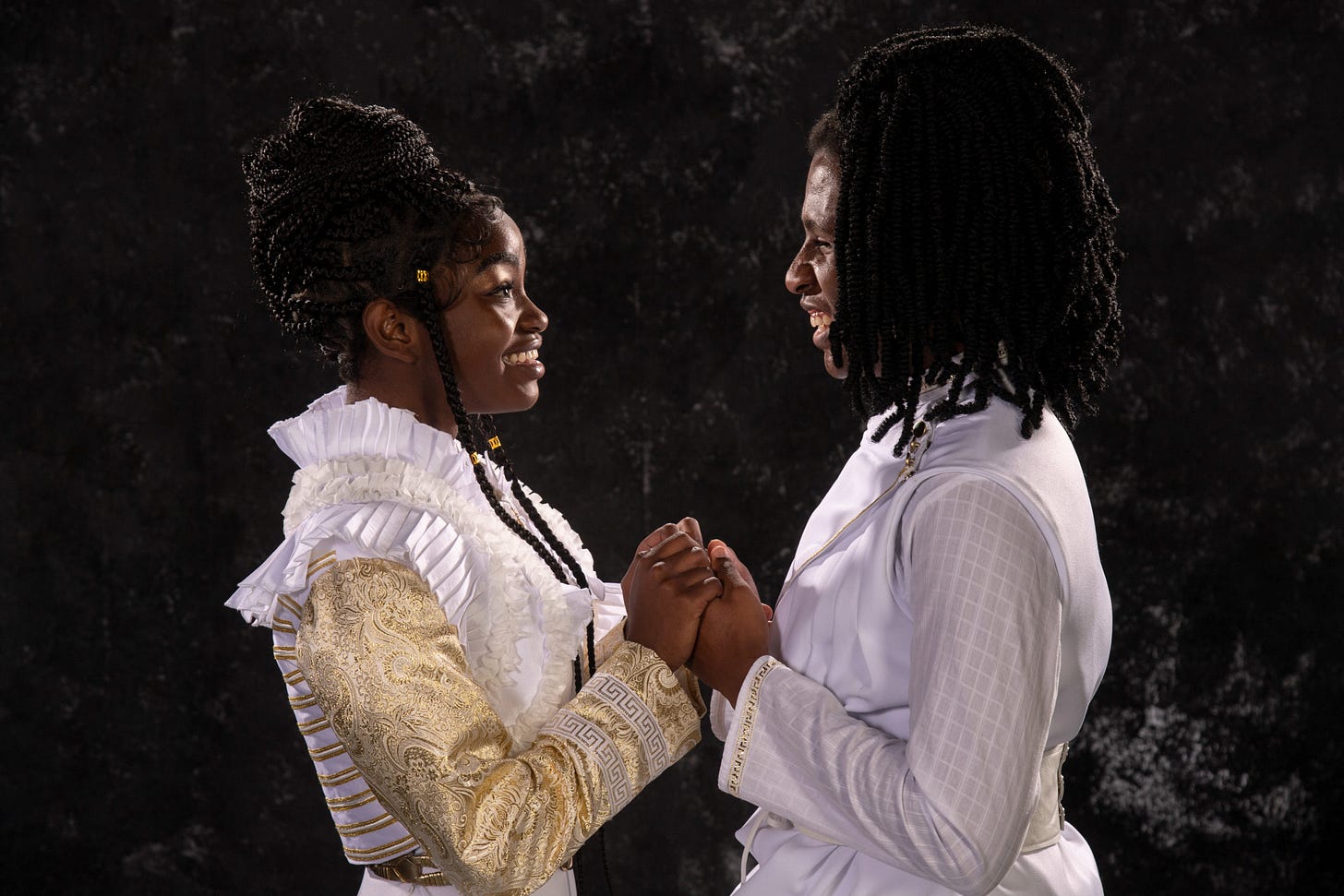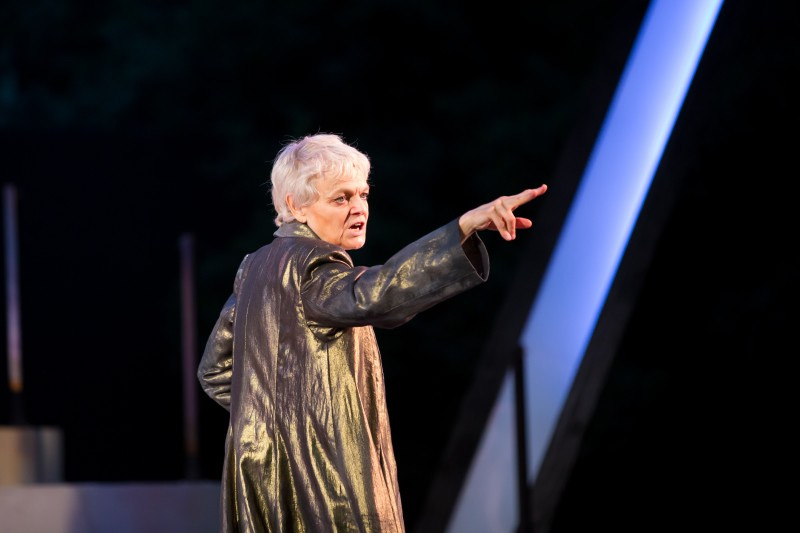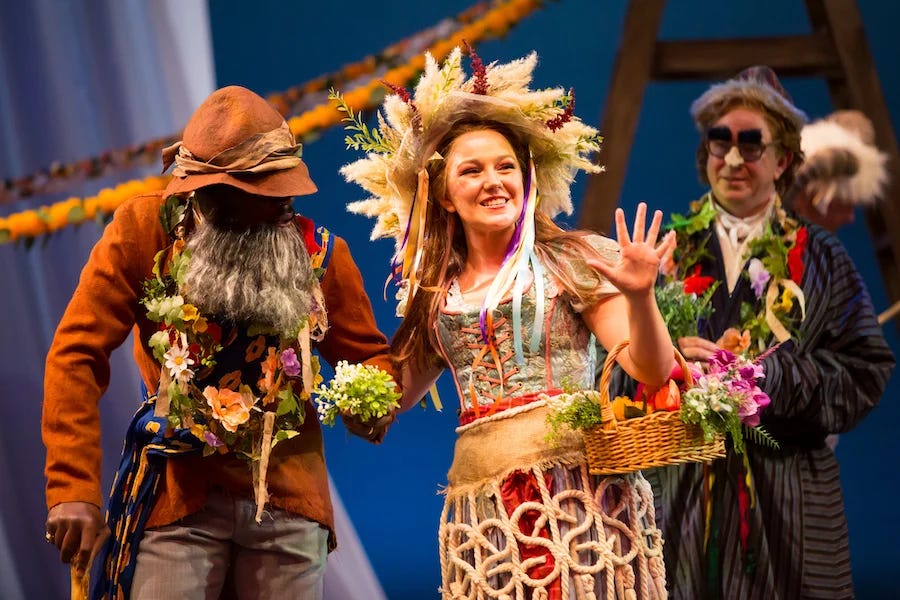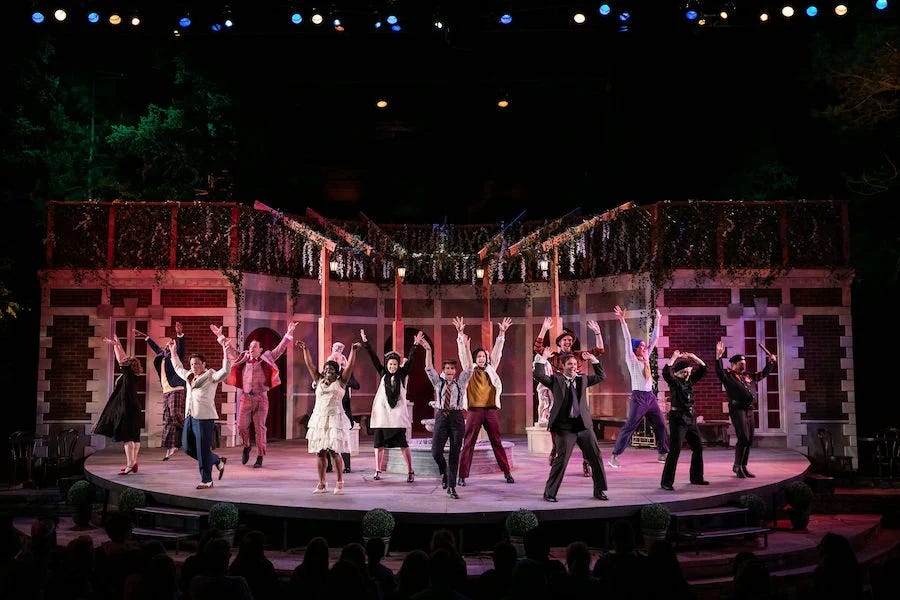Seven Shakespeares this Summer
Because so many of my posts have been skating-focused, today I offer a countdown of all the Shakespeare shows I saw this summer (with a lightning review of each!), ending with the diamond of the season.
A Midsummer Night’s Dream (Utah Shakespeare Festival, dir. Jessica Kubzansky). Featuring a 70s-ish floral crochet set and neon lights, there is a stark difference between Athens and the forest worlds, reflected not only in design but in the way the actors move around across the stage: think highly stylized viewpoints-style movement at the opening. The dream world features heavy physical work among the sprites, and a slow shift in costume for the pairs of young lovers as they shed their Athenian robes. Oh, and Puck is an acrobat…and only “sometimes” honest, as they admit in the epilogue. The best moment of the show: when the Rude Mechanicals deliver a preamble to their performance. Using puppets.
Romeo and Juliet (Utah Shakespeare Festival, dir. Betsy Mugavero). The production’s “three (!) hours’ traffic” was played on a sparse set, leaving plenty of space for the actors to climb, dance, and duel. I jumped in my seat when, during Juliet’s potion speech in Act 5, when Tybalt appears on the balcony far above Juliet—backlit, mouth agape. As the actor playing Juliet (Naiya Vanessa McCalla) put it, here we get to see the horrific inner workings of Juliet’s mind—finally. And one of my favorite endings to this play in performance: Juliet wakes before Romeo dies, and the two lock eyes for a brief second. Scored by music a la Bridgerton.
Timon of Athens (Utah Shakespeare Festival, dir. Lisa Peterson). This is a hard play to do—indeed a reason we do not see it often. Performed in an indoor, flexible space, with opulent costumes from a nondescript 17th-century European country (were they Spanish? Italian? Dutch?) in the first half of the show. There was some excellent acting in this one, though ultimately some bizarre choices too—particularly in terms of Timon’s movement post-intermission after he revokes fortunes in favor of the forest.
Coriolanus (Utah Shakespeare Festival, dir. Lisa Peterson). Crisp directorial and actor choices, Corioulanus featured a stunning set—some of which was shared with Timon, given their shared stage. For a play concerned with citizenry, leadership, and the relationships between ruler and ruled, this production did an excellent job drawing in the live audience in the use of space and direct address.
King Lear (Colorado Shakespeare Festival, dir. Carolyn Howarth). With Ellen McLaughlin at the helm, this production of one of Shakespeare’s most brilliant tragedies manages to be both funny, disturbing (in a good way), and touching. McLaughlin, who originated the role of the Angel in Tony Kushner’s Angels in America, played the monarch with the original text’s pronouns, and brought us on Lear’s tragic journey with glimmers of humor early on and, ultimately, a profound sense of loss and pity for the feeble father. The set: two monolith, frame-like modern structures that light up alongside artificial rocks and a cliff/cave with stairs. A solid cast—and particularly Edgar/Poor Tom (Sean Scrutchins).
The Winter’s Tale (Colorado Shakespeare Festival, dir. Wendy Franz). Stunning visuals abound: Paulina (Noelia Antweiler), in airy robes, manipulates the opening world of the play, exchanging books from actors’ hands, until all open and butterflies flutter into the air and land on the stage floor; actors double as slowly-moving scuptures; Florizel and Perdita decorate the stage with flower garlands during the sheep-shearing scene in Act 4; and then there is the statue of Hermione in Act 5, first draped with a sheer cloth before she is revealed to both audience and actors. Paulina is up to something in this production: maybe she has, after all, been hiding Hermione for 16 years. For a play that spends three acts steeped in tragedy (Mamillius tragically dies; a jealous husband rebukes his friend and locks up his wife), the comic brilliance of Autolycus (Jacob Dresch), whose unscripted redemption arc for the swindler adds some emotional depth not common to this part, is a welcome presence in the second half.
Much Ado About Nothing (Colorado Shakespeare Festival, dir. Kevin Rich). Masterful text work is coupled with brilliant physical comedy in this production of Much Ado, set in post-WWI France with period costumes and a garden courtyard set, complete with ancient Greek sculptures and a trickling water fountain. Where Shakespeare’s texts can often feel like a foreign language even to native English speakers, the actors here do a brilliant job of wielding words as if the play were written yesterday. But what outshines even this skillful command of language is the way actors engage with the audience: when Benedick (KP Powell) asks spectators “Shall these quips and sentences and paper bullets of / the brain awe a man from the career of his humour?”, he expects—even demands—an answer of us. That sense of liveness, the palpable energy between spectator and performer, effervesced throughout—and indeed across the cast, from Dogberry’s (Sean Scrutchins) slapstick comedy to Beatrice’s (Jessica Robblee) genuine transformation as she trades witty banter for honest affection. This one sings!








